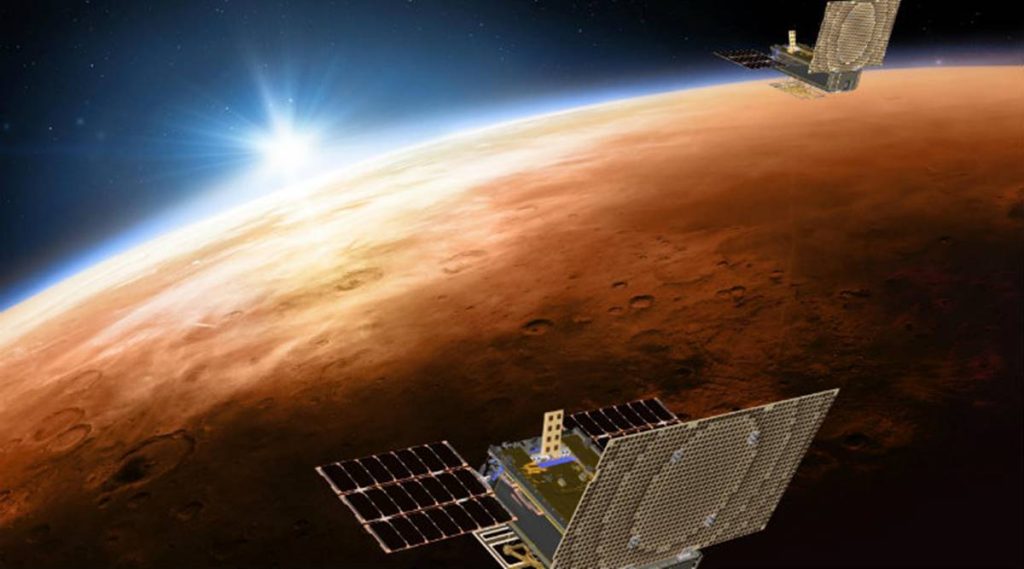On April 2, a SpaceX Falcon 9 rocket, carrying ten military satellites – two of which were built by SpaceX – lifted off from Vandenberg Space Force Base in California. This marks the first military communications and missile tracking constellation launch, ideated by the US Space Development Agency. The launch was Tranche 0 with the first 10 of the 28 missile tracking and data-transport satellites of the Space Development Agency’s proliferated low-Earth orbit constellation.
The satellites have been placed 1,000 kilometres above Earth into two orbital planes. While commercial constellations/ mega-constellations have been known to be adaptive to the military industry by supporting the military satcom needs, a dedicated military satellite constellation would be precise to the needs of the defence needs of any country. How is the military constellation different from the rest? What is the feasibility of military constellations for other space powers?
There are two examples of mega-constellation applications in the US for military purposes – Blackjack and the Space Development Agency. These include platforms with different sensor types, communications and PNT capabilities to cater to wide-ranging military uses like tactical, operational support and strategic missile defence. With the military mega-constellations, however, a transport layer backbone uses the optical Inter Satellite Links (ISL) to make a network that gets data from sensor nodes and integrates them into tactical data link networks. At a time when all facets of space operations are being revisited to build military resilient systems this marks the beginning of a transformation in the military space industries. Space powers have been pondering the orbital regimes apt for their needs.
The primary purpose of these constellations would be to enhance missile early warning capabilities. This includes detection, tracking, and possibly deflecting of hostile weapons. The advancement in technological capabilities has made it a challenge for early warning systems from the GEO. The satellites in GEO have been known to have issues with detecting threat features in required details. One example of this challenge are the hypersonic weapons that are actively being developed. The GEO is also known to have operational difficulties due to latency in receiving information.
Additionally, the failure of a satellite’s functions would take longer to replace or repair. To address all these future challenges, it would be imperative to gradually consider shifting military satellite constellations closer to Earth to achieve greater granularity and less latency. Closer to the Earth would undoubtedly have drawbacks, but a balance must be reached between military-dedicated satellites at GEO and LEO.
There are no known military-dedicated satellite constellations in orbit. Due to the very short development time and rapid replacement time, increasing these small satellites in orbit would be practical. It would also be difficult to detect and track these small satellites which would provide sufficient stealth for military-dedicated assets. The LEO also includes rapid-revisit rates that would aid near-constant surveillance of areas of interest. Large numbers of these small satellites would enhance the transfer of critical information at significant volumes in a shorter time. Strong regulation and internal norms for tracking and traffic management would be an essential starting point for a long-term military presence in the LEO.
Russia has attempted to increase its space surveillance capabilities. Still, three attempts between 2021-2022 to launch a new generation of optical reconnaissance satellites were unsuccessful and eventually saw the launched ones unserviceable. Some examples include the deployment of the incomplete ECS system, Liana, a maritime electronic reconnaissance system or the 2022 version of GLONASS-K and GLONASS-M satellites, all affected by the war in Ukraine. In China, the Yaogan satellite constellation, launched in 2020, has been designed by them to survey their neighbourhood, and some of these satellites are known to have military designations. Jianbing categorises military reconnaissance satellites of Yaogan – as JB-4, JB-5 and the like.
A dedicated range of small satellites for exclusive military use would be essential for India to consider at this point of the space race. To meet the needs of the Indian defence sectors, a minimum of 15 satellites that are operationally designed for the needs of the army, navy and air force would be a sufficient starting point in the case for India. With the neighbourhood as the primary focus, it would also help expand the range of India’s surveillance radar beyond the immediately studied regions. Multiple small satellites designed for the collective-immediate needs of the Indian defence forces would also be cost-efficient and provide the necessary boost for India’s forces. Military-dedicated satellite constellations will be superior in service in comparison to dual-use commercial satellites.





